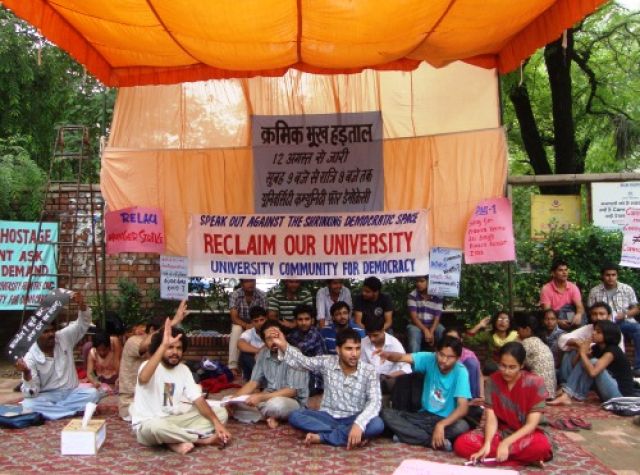
The October 3-14 Commonwealth Games being held in Delhi have proven a disaster for India’s poor — economically and socially. Even before the games opened, 47 workers had died working on sites linked to the games, MSNBC.com said on September 23.
The September 23 Financial Times said working conditions were so bad that the People’s Union for Democratic Rights and other labour rights’ activists “filed a lawsuit in Delhi high court this year, claiming that workers on games sites faced unsafe conditions and rampant violation of a wide range of labour laws and standards.
“The court-appointed investigators found the ‘lack of overall hygiene, environmental cleanliness and sanitation’ in workers’ quarters at most games sites was ‘deplorable’, citing a paucity of lavatories, and calling the metal huts ‘insufferable in the extreme Delhi weather’.”
The games have also displaced at least 300,000 people from their homes in Delhi’s slums. Only one third of the displaced have been resettled, GamesMonitor.org.uk said in a June 19 post.
GamesMonitor.org.uk reported on the environmental damage: “Environmental impact assessment norms have been violated. Hundreds of trees have been felled. Rain water drains have been covered.
“The Games Village has been built on the flood plains of the River Yamuna, causing a drop in the ground water table in Delhi. The river bed is a seismically active area.
“There has been a significant increase in cases of asthma and allergies directly as a result of the dust from the construction work.
“Despite all this government officials have launched an ‘ecological code’ claiming that these will be a ‘Green Games’.”
The Games have also been linked to an outbreak of dengue fever.
The August 22 Times of India reported Indian health minister Ghulam Nabi Azad said: “Dengue and water is strongly related. Delhi is already dug up because of the games and it is also raining heavily.
“Since water remains accumulated in many places, it becomes a breeding ground for mosquitoes, which are contributing to diseases.”
Ironically, dengue fever is one of the reasons a number of foreign athletes have given for pulling out of the Games.
In 2003, the cost of holding the games in Delhi was estimated at about $450 million. GamesMonitor.org.uk said by March, Games organisers had estimated the costs had blown out to almost $2.4 billion.
GamesMonitor.org.uk said: “In April 2010 the Delhi finance minister said; ‘We are broke’. They have no money left to pay for the third phase of the Delhi Metro.
“In the last six months they have put up bus fares and water tariff, withdrawn subsidy on LPG cylinders and increased VAT [sales tax] on a number of items. The city budget for 2010-11 increased several direct and indirect taxes. Land prices have escalated in the Trans-Yamuna area of the city.
“Delhi has become a more expensive city because of the games.”
Games officials are doing their best to keep the poor out of sight to visitors. Two-and-a-half metre tall blue screens have been erected around slum villages to hide the poor.
The British Independent said on October 4 that increased security has hurt slum dwellers: “Such is the level of security that people are afraid to step out beyond the blue barriers while the games are on for fear police will query their identification cards and force them from the city or lock them up.”
Slum dwellers Anthony and Dolly Peter told the Independent conditions in their village had worsened due the games. They said “since the games’ preparations began, we have had no delivery [of water]”.
One consolation for hardship brought by the Games may have been that ordinary Indians could have the chance to witness high-quality sport . But that, too, has been denied.
It was clear on the first day that attendance at the games was very low. Australia’s netball game against Samoa had 58 people in attendance. Australian’s Tennis player Greg Jones played in front of 12 people in his first match.
Dolly Peter told the Independent one big reason for the low attendance: “We are not going to be able to see any of the Games’ events … we have no money for that.”
Ticket costs exclude most Indians. The cheapest tickets for the athletics are 200 rupees, or $4. But the World Bank says more than 800 million Indians survive on less than $2 a day and many more survive on only a little more.
The vast majority simply have no money to spend on attending the games — especially when many of the sports on offer are largely unknown in India.
The very least games organisers could do to make up for the damage inflicted on ordinary people would be to make a whole lot of events free of charge. That could, at least, allow more involvement in the event by ordinary people in Delhi.
Whatever the medal tally at the end of the games, it seems all ordinary Indians are going to win is homelessness, a debt burden for decades to come and an outbreak of dengue fever.
[Tim Dobson edits radical sports blog Press Box Red.]
